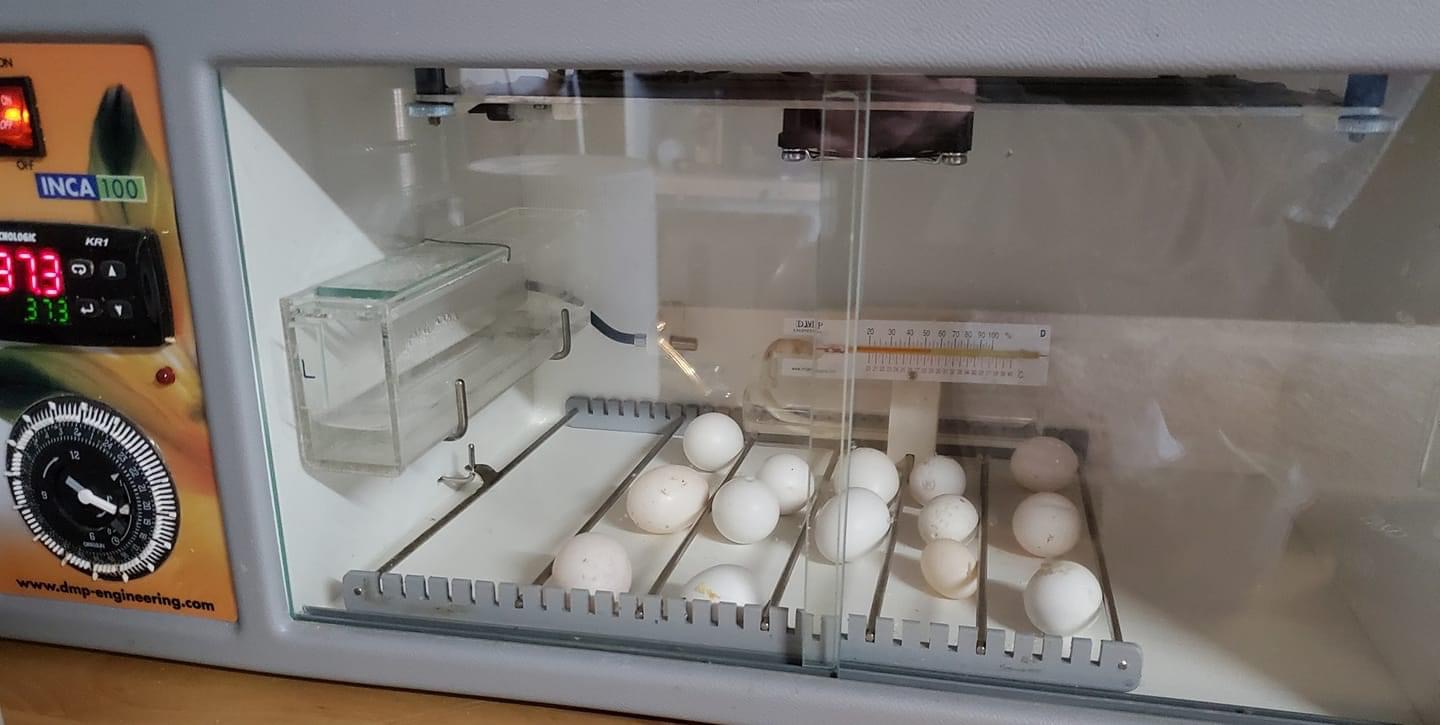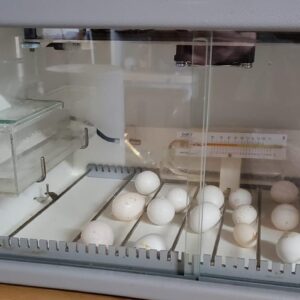Carnaby’s black cockatoo parrot eggs
$75.00
Carnaby’s black cockatoo, also known as the short-billed black cockatoo, is an endangered species native to southwestern Australia. They are known for their distinctive black plumage with white tail panels and cheek patches. The breeding and conservation of Carnaby’s black cockatoos are of significant interest due to their endangered status.
Nesting and Egg Laying:
– Nesting Sites: Carnaby’s black cockatoos typically nest in large, hollow trees, often Eucalyptus species, that are at least 100 years old. The choice of nesting sites is crucial for their reproduction.
– Breeding Season: The breeding season usually spans from August to January.
– Eggs: Female cockatoos lay one to two eggs per clutch. The eggs are oval-shaped and white.
– Incubation: The female incubates the eggs for about 29 days, during which the male provides food.
Conservation Efforts:
– Habitat Protection: Preserving old-growth forests and suitable nesting trees is vital for the conservation of Carnaby’s black cockatoos.
– Artificial Nesting Sites: Conservationists often install artificial nest boxes to compensate for the loss of natural nesting sites.
– Breeding Programs: Breeding programs in captivity help boost population numbers and ensure genetic diversity.
Challenges:
– Habitat Loss: Urbanization, agriculture, and logging have significantly reduced their natural habitat.
– Climate Change: Changes in climate patterns can affect food availability and nesting success.
– Predation: Eggs and chicks are vulnerable to predation by other animals, including invasive species.
Efforts to protect and conserve Carnaby’s black cockatoos are ongoing and require collaboration between government agencies, conservation organizations, and local communities.
Description
Carnaby’s black cockatoo (Calyptorhynchus latirostris) is a large, striking parrot native to southwestern Australia. Known for its distinctive black plumage and white tail panels, this species is a member of the Psittacidae family and is one of the two species commonly referred to as white-tailed black cockatoos.
Physical Description
– Size: Carnaby’s black cockatoo measures approximately 53-58 cm in length.
– Plumage: Predominantly black with white patches on the tail. The males typically have a dark grey beak, while females have a lighter, bone-colored beak and distinctive yellow eye-rings.
– Crest: They have a short, forward-facing crest on their heads.
Habitat and Distribution
– Habitat: These birds are primarily found in eucalyptus woodlands, forests, and shrublands. They are also known to inhabit areas with proteaceous plants, which provide a vital food source.
– Distribution: Restricted to the southwestern region of Western Australia. Their range includes the coastal and sub-coastal areas, extending from Geraldton in the north to Esperance in the southeast.
Diet
Carnaby’s black cockatoos are primarily granivorous, feeding on the seeds of native plants such as banksias, hakeas, and eucalypts. They also consume insects and their larvae, particularly during the breeding season when their nutritional needs are higher.
Behavior and Social Structure
– Breeding: Breeding typically occurs from July to January. They nest in large tree hollows, laying one to two eggs, although usually, only one chick survives to fledge.
– Social Structure: These cockatoos are known for their strong social bonds, often seen in pairs or small flocks. Larger flocks may form outside the breeding season.
Conservation Status
Carnaby’s black cockatoo is listed as Endangered under the IUCN Red List. Major threats to their survival include:
– Habitat Loss: Due to land clearing for agriculture, urban development, and mining.
– Decline in Food Sources: Loss of native vegetation and competition with invasive species.
– Climate Change: Altering their habitat and food availability.
– Illegal Wildlife Trade: They are sometimes targeted for the pet trade.
Conservation Efforts
Conservation strategies for Carnaby’s black cockatoo involve habitat restoration, protection of nesting sites, and public education campaigns to raise awareness about their plight. Various organizations and government agencies are actively working to monitor populations and implement recovery plans to ensure the species’ long-term survival.
Interesting Facts
– Carnaby’s black cockatoos are known for their loud, distinctive calls, which can carry over long distances.
– They play a crucial role in their ecosystem by aiding in the dispersal of seeds and maintaining the health of their native habitats.
Understanding and protecting Carnaby’s black cockatoo is vital for preserving Australia’s unique biodiversity and ensuring that these magnificent birds continue to thrive in the wild.




Reviews
There are no reviews yet.